- Saturday, July 27, 2024
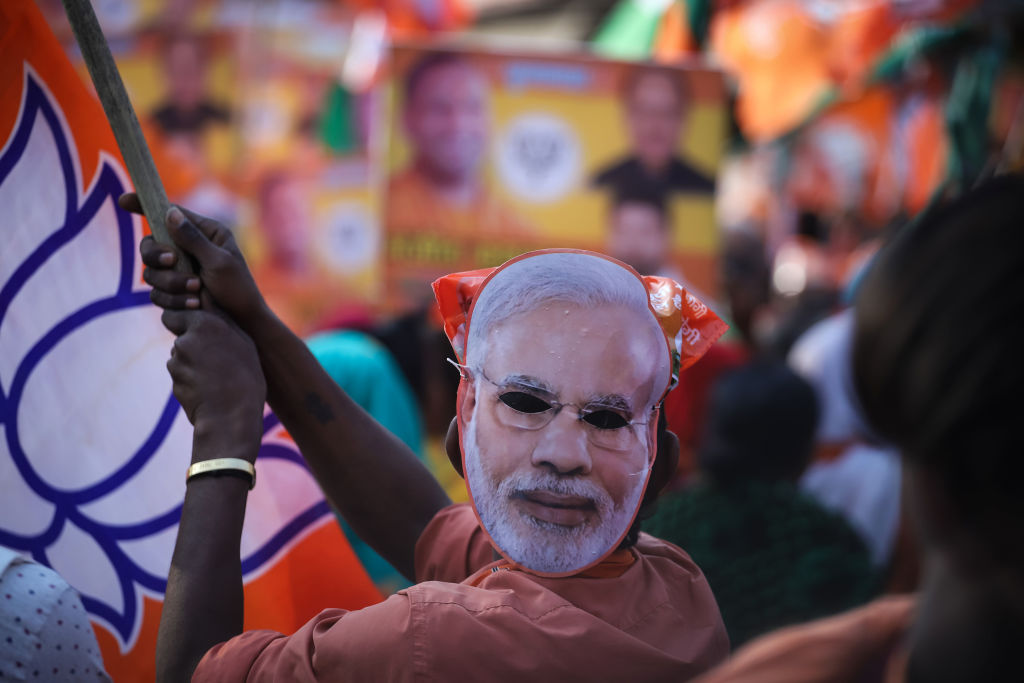
By: Dr Prem Lal Joshi
India has evolved from a nation of “snake charmers” and a “third-world nation” to one of the world’s most powerful forces in the 21st century. Authorities in India were sure that their nation was now a leading one as well as a balancing power. They now envy India’s place in global politics, the country’s booming economy, and its resurgent military might. India is currently on track to become the world’s largest generator of renewable energy, and it has established trade relations with both the East and the West.
According to one perspective, Indian prime minister Modi views a leading power as roughly equivalent to a large power. India should be evaluated in light of its distinct culture, standards, and ideals. India has been aiming to acquire this status of world power through strong economic foundations, effective governmental institutions, military strength, a trained labour force, etc.
A state or group of nations is referred to as an “emerging power” or “rising power” if its influence over world events has significantly increased. Such a power seeks to have a greater influence on world affairs, whether on a local or international level. Given the resources and level of development of the state, these goals may be achieved. These are important cues that a growing power is also a developing economy because political and military emergence depend on and are predicated upon economic development. India, as a developing state, continued to pursue its own autonomous foreign policy.
The purpose of this piece is to explain how India has become the dominant global force in the twenty-first century. Its takes into account the following factors in order to comprehend why India is a rising global power and why it has played a significant role in global geopolitics and economic affairs: demographic trends and natural resources; a growing economy; rising military power; political stability; a balanced foreign policy; a manufacturing hub; technological advancement; the ability to exert influence on a global scale; skilled and trained human capital, cultural strength; a tourist destination; etc. Some challenges that India generally face in achieving this goal are also highlighted in this piece.
India has great advantages because of its geographic location. The Indian Ocean, the third-largest body of water in the world, is the only ocean in the world to bear the name of the Indian subcontinent. This represents India’s geographical and strategic influence over the Indian Ocean. Additionally, the opening of the Suez Canal in 1869 reduced the distance between India and Europe by 7,000 km. This gives India a favourable situation in international trade and commerce.
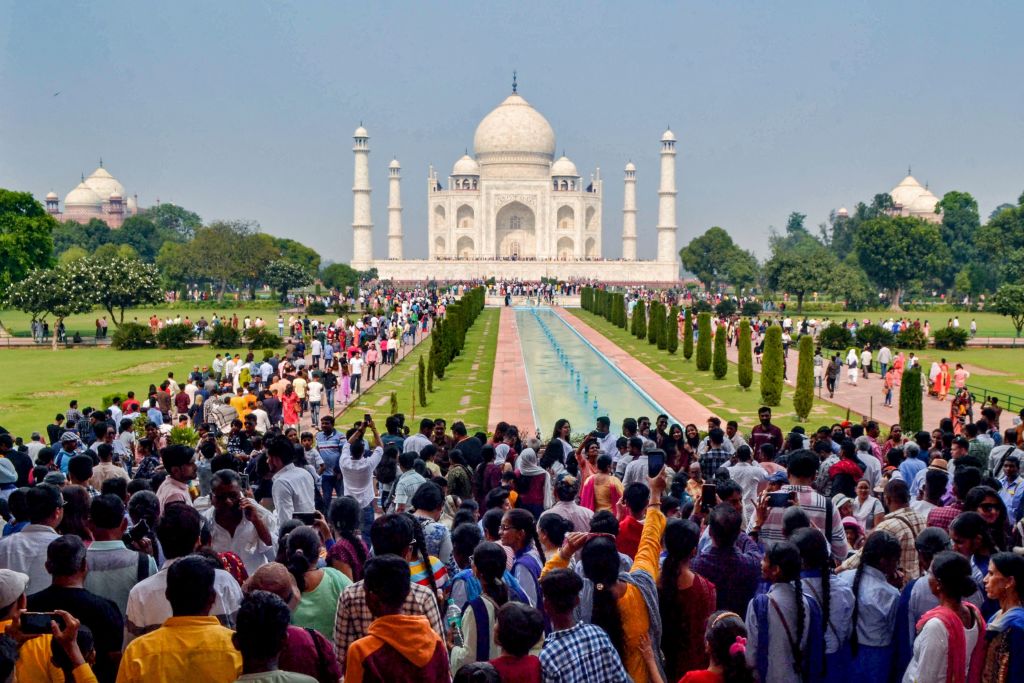
With over 1.35 billion people, which is about 17.5% of the world’s population, India has the second-largest population in the world after China. The average age of India’s population is under 35 year. Its rates of birth and death are comparable to those seen around the world. With a median age of 28.7 years, India’s reliance ratio by 2030 will be only slightly above 0.4, compared to 38.4 for China and 48.6 for Japan.
India has a positive demographic dividend compared to the ageing labour forces of other large nations. Because more people are now of working age, there will be more growth in the future.
Additionally, according to a study by the country’s ministry of external affairs (MEA), there are 32 million non-resident Indians (NRIs) and overseas citizens of India (OCIs) living outside of India, making up the largest overseas diaspora in the world.
With 125 million speakers, or more than 11 per cent of the Indian population, India is the second only to the United States in terms of English proficiency. This increases their access to top-notch educational systems, employment possibilities, and cognitive abilities.
Indian natural resources are abundant.
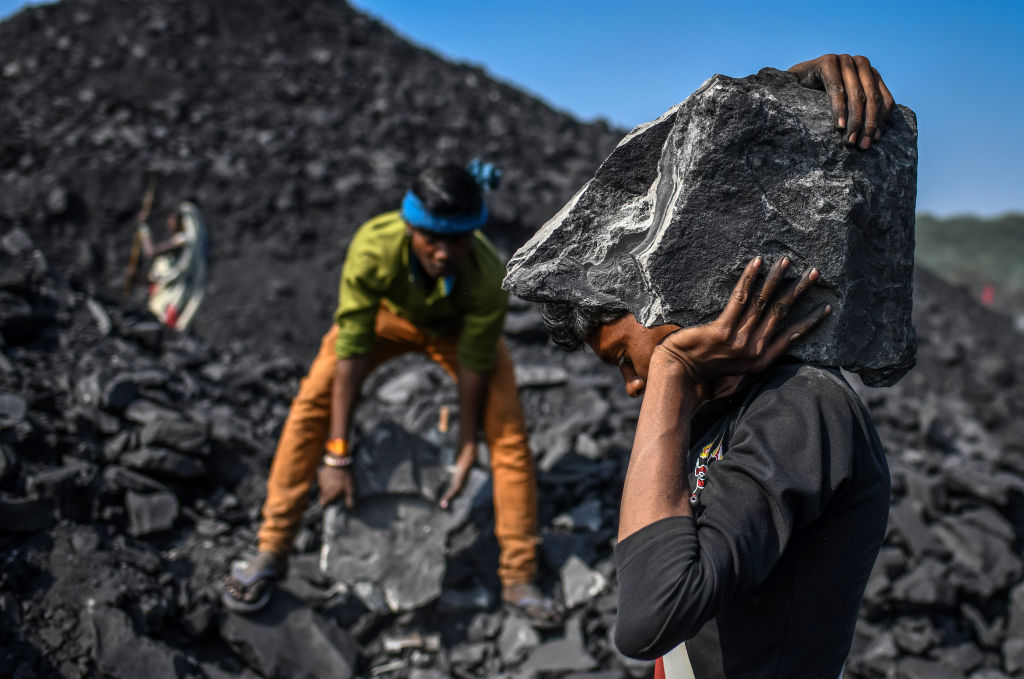
India has a distinct edge in the growth of its industrial sector due to the country’s greater diversity of resources, particularly minerals, than all but a small number of other nations. In India, coal is the primary energy source and is the most popular worldwide. Up to 87 different minerals, including atomic, metallic, non-metallic, and fuel minerals, are produced in the nation. Coal, iron ore, and bauxite reserves are the largest of the minerals. Twenty five per cent of the country’s demand is satisfied by India’s oil deposits, which are located in eastern Assam, Gujarat, Rajasthan, and Bombay High off the coast of Maharashtra.
Only 4 per cent of the world’s renewable water resources are found in India. In India, groundwater is the primary source of water.
Furthermore, 1,945,355 square kilometre (or 56.78% of India’s total land area) is currently under cultivation.
India is, therefore, seen as a developing global power due to its favourable geographic location, young working population, and abundance of natural resources.
Since gaining independence, India has supported a mixed-economy system based on five-year economic planning that it calls “socialist.” Despite this, India has one of the biggest and most diverse economies in the world, but due to its massive population, it also has a lot of low-income people in terms of income and gross national product (GNP) per capita.
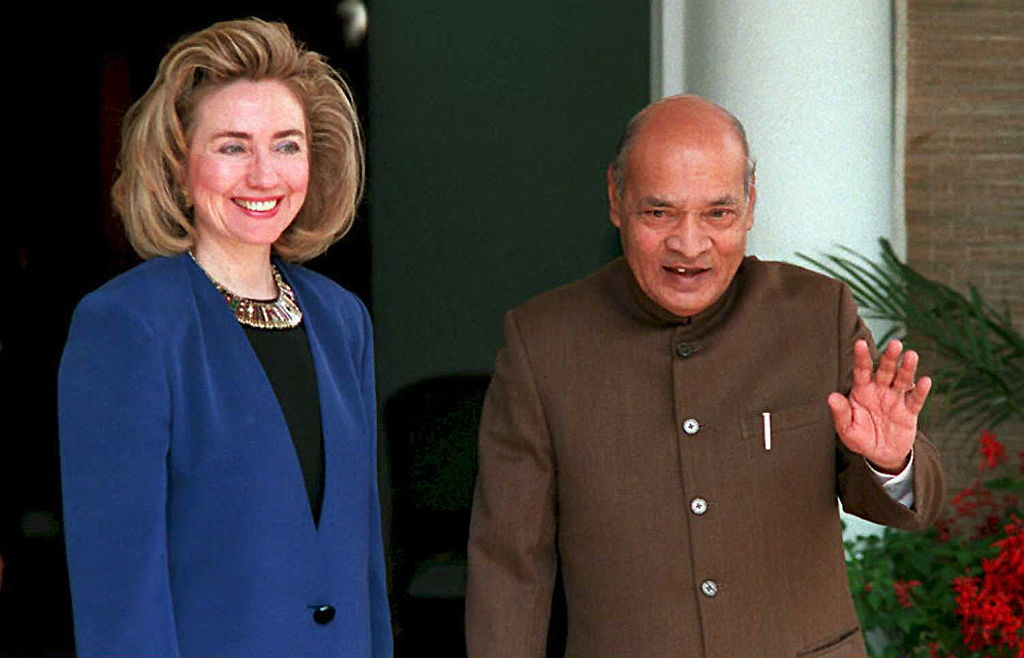
But after the Soviet system fell apart in the early 1990s, under former PM Narasimha Rao’s government and then the finance minister, Dr Manmohan Singh’s guidance, India implemented a number of free-market reforms that accelerated the development of its middle class.
Additionally, thanks to its highly educated and skilled workforce, India became one of the global hubs of the high-technology boom that started in the late 20th century and resulted in significant annual growth rates.
Although the agriculture industry continues to employ the bulk of the workers (about 50 per cent), it no longer accounts for the majority of the country’s gross domestic product (GDP), contributing only 15 per cent of the GDP. While the largest increases have been seen in commerce, banking, and other services, which account for the vast majority of GDP overall, the services sector employs one-third of the labour force in India.
The services sector will make up roughly 50 per cent of the GDP by the end of 2021. India’s transition to a market economy has enabled the growth of the services industry.
Manufacturing continues to contribute significantly to the GDP, which is currently greater than 15 per cent. Piyush Goyal, the minister of commerce and industry, recently urged the manufacturing sector to consider measures to boost its contribution to GDP to 25 per cent.
Bollywood, India’s lucrative cinema business, produces more films than Hollywood does overall. The globe enjoys Indian movies, songs, and dances. The value of the Indian film business is predicted to reach Rs 182 billion by the end of 2022.

Forty per cent of India’s workforce is employed by small and medium-sized firms (SMEs), which also account for 17 per cent of India’s GDP. Additionally, when it comes to start-up ecosystems, India has overtaken the rest of the world. India currently has the largest start-up ecosystem in the world, with more than 75,000 start-ups, of which more than 100 have unicorn status.
More than one-fifth of India’s massive labour force is reportedly employed by the “organised” sector of the economy, which includes mining, plantation agriculture, industrial industries, utilities, and modern transportation, commercial, and service firms.
The middle- and upper-class population, which also acts as the GDP’s main support, is responsible for the majority of economic growth.
The organised sector, which includes labour unions, chambers of commerce, professional associations, and other organisations typical of modern capitalist economies, is the subject of the majority of government regulation. The bulk of professionals, scientists, and technicians in India, in addition to wage earners, are employed by the organised sector.
According to data from the Indian ministry of statistics and program Implementation (MoSPI), industrial growth has increased by seven per cent so far in the fiscal year 2021–22 (April–September), down from a growth of 23.8 per cent in the same period a year earlier.
India is expected to grow at a 6.8 per cent annual rate in the current fiscal year 2022, following an 8.7per cent annual growth rate in the fiscal year that ended March 31. This information was published in the IMF’s October 2022 World Economic Outlook: Countering the Cost-of-Living Crisis at the start of the World Bank and IMF annual meetings in Washington, DC.
According to Martin Farrer, China’s emergence has been the most significant development in the international economy in recent decades, but India could be a new economic powerhouse that is going unnoticed.
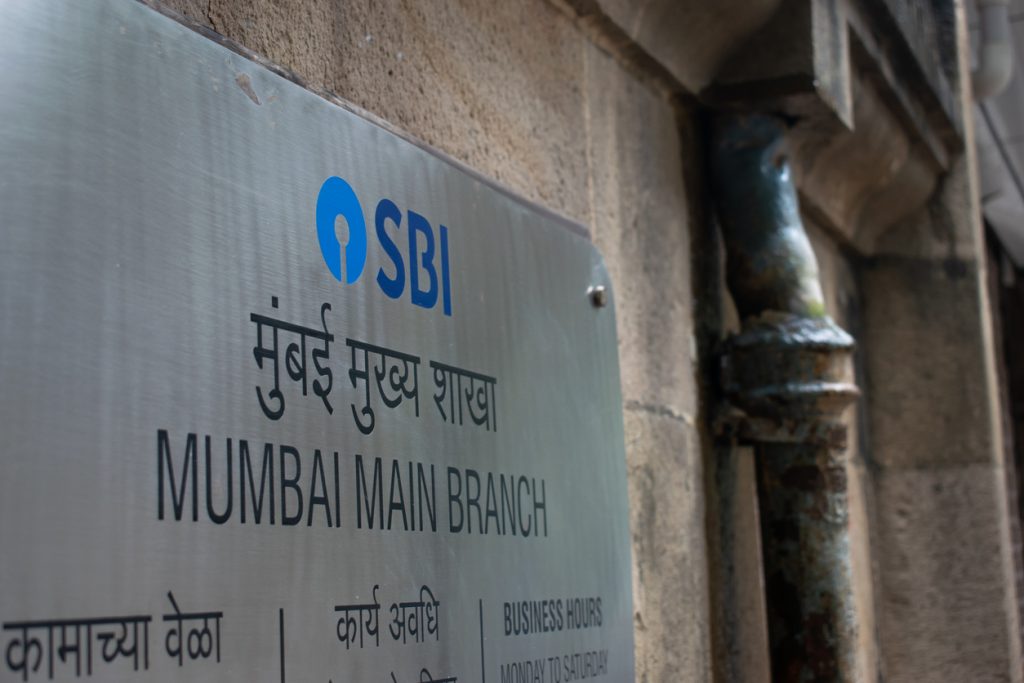
According to the IMF, the Indian economy was the world’s 11th-developed economy a decade ago, but it has since grown to become the fifth-largest economy in the world, surpassing the UK. This is one of the outstanding achievements of the Indian economy.
According to a survey conducted by experts at the State Bank of India (SBI), the Indian economy is predicted to grow at the fastest rate among major economies in the fiscal year 2022–2023, with a first-quarter GDP increase of 13.5 per cent. By 2027, the IMF expects India’s GDP to be the fourth-largest in the world.
The Modi administration’s market reforms, including opening up India to more foreign investment and tax reforms with the introduction of GST and cutting corporation tax from 35 per cent to 25 per cent, may have relieved entrepreneurs and encouraged them to invest more in the economy, which has resulted in the rising growth rate in the Indian economy.
India, on the other hand, has shown stability and growth in its economic operations while the United Kingdom, the United States, and the majority of the European countries are dealing with severe recession circumstances and growing inflation rates.
Business experts and economists believe that India may be able to surpass Germany and Japan to become the world’s largest economy if it continues to increase its capacity to grow its manufacturing sector at a much higher rate over the next 6-7 years by infusing more capital.
India’s strategic situation has altered significantly during the past 20 years since it became a nuclear power. Due to the constant security threats posed by its two main opponents, Pakistan and China, India has been arming its military with cutting-edge equipment and boosting its defence budget.
In the course of a significant upgrade to its equipment and aircraft that was carried out over time, the Indian Air Force introduced more than twenty new types of aircraft. The Indian Air Force’s organisational structure witnessed a striking change in the final decade of the 20th century with the entry of women for short-service commissions. Additionally, during this time, the Air Force engaged in some of its riskiest operations ever.
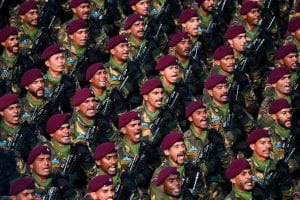
The Indian Air Force’s fighter fleet consists of the Dassault Rafale, Sukhoi Su-30MKI, MiG-21, Mirage-2000, and HAL Tejas LCA. The Advanced Medium Combat Aircraft (AMCA), a fifth-generation stealth, multirole, air superiority fighter with sixth-generation technologies, is being developed by India for the Indian Air Force and Indian Navy.
The Indian Navy is deployed in three area commands, each of which is headed by a flag commander. The Eastern Naval Command is headquartered in Vishakhapatnam, Andhra Pradesh, on the Bay of Bengal, whereas the Southern Naval Command is headquartered in Kochi (Cochin), Kerala, also on the Arabian Sea. The Arabian Sea city of Bombay serves as the headquarters for the Western Naval Command. Among the Indian Navy’s strengths are naval combat, force projection, sealift, and nuclear deterrence.
There are approximately 300 aircraft and more than 68,000 active and 75,000 reserve soldiers. According to Wikipedia, the Indian Navy currently has two aircraft carriers, one amphibious transport dock, eight landing ship tanks, eleven destroyers, thirteen frigates, two nuclear-powered ballistic missile submarines, fifteen conventionally powered attack submarines, nineteen corvettes, eight Landing Craft Utility vessels, ten large offshore patrol vessels, etc.
Due to India’s huge population, its 1.4 million active personnel and 1 million reserve soldiers make it the second-largest army after China. According to one report, India has more than 5,000 combat tanks, 2,500 infantry fighting vehicles, 3311 towed artillery pieces, and 12,000 armoured vehicles.
In addition to having anti-satellite weapons, anti-ballistic missiles, and submarine-launched ballistic missiles, India also has the cruise missile Brahmos and the intercontinental ballistic missile Agni 5, both with a range of 5000–8000 kilometers. India has previously shown the capability for hypersonic missiles, so it is currently developing them quickly as well.
India has given developing drones for the armed forces major priority. The Indian Army currently possesses 30 Heron UAVs, which it bought straight from Israel, in its fleet. Swarm drones have been incorporated into its mechanised forces. The Defense Research and Development Organization (DRDO) is working to create the stealth drone “Ghatak,” but no details are yet known about it.
According to reports, the Indian Army presently uses drones and AI systems to quickly gather, analyse, and present vital data in order to support speedy decision-making on the battlefield. They employ a variety of tools, such as a storm drone, drone feed analysis, Mandarin translators, Project Prism, an AI-based target identification system that uses motion and object detection, a vehicle tracking system called Project V-logger, and an integrated command station.
Silent sentry (AI-enhanced rail-mounted robot): AI-based Intercept Management System (IMS), Sapper Scout, Mine Detection UGVs, and other swarm drones are examples of this. In order to detect stealth human activity, translate Mandarin in real time, find suspicious vehicles, keep an eye on border areas, assess dangers, and share threat information, a variety of equipment is employed. Terrorism also poses a serious threat to coming generations. Under Modi, India has chosen a comprehensive approach to resolutely tackle all external security threats to the country, whether they come from neighbours or not.
The liberation of Goa from Portuguese rule, the largest troop contributor to UN peacekeeping forces since its inception in different countries and globally, the 1971 war and the creation of Bangladesh, the Operation Vijay in1999, the mobilisation of more than 8300 troops and the rescue of up to 27,986 people in the 2004 Indian Ocean earthquake and tsunami, relief efforts during the Kashmir earthquake, and the successful completion of a surgical strike in Pakistan-occupied Kashmir against terrorists are some of the well-known achievements of the Indian Army.
By boosting domestic manufacturing, reducing reliance on imports, and encouraging exports, the ‘Make in India’ programme also helps India become self-sufficient in the defence sector.
There are numerous significant products such as the 155mm Artillery Gun system ‘Dhanush’, Light Combat Aircraft ‘Tejas’, Surface to Air Missile system ‘Akash’, Main Battle Tank ‘Arjun’, T-90 tank, T-72 tank, BMP-II/IIK, Su-30 MK1, Cheetah helicopter, Advanced Light Helicopter, Dornier Do-228, High mobility Trucks, INS Kalvari, INS Khanderi, INS Chennai, Anti-Submarine Warfare Corvette (ASWC), Arjun Armoured Repair and Recovery Vehicle, Bridge Laying Tank, Bi-Modular Charge System (BMCS) for 155mm Ammunition, Medium Bullet Proof Vehicle (MBPV), Weapon Locating Radar (WLR), Integrated Air Command and Control System (IACCS), Software Defined Radios (SDR), Lakshya Parachute for Pilotless Target Aircraft, Opto Electronic Sights for battle tanks, Water Jet Fast Attack Craft, Inshore Patrol Vessel, Offshore Patrol Vessel, Fast Interceptor Boat, Landing Craft Utility, 25 T Tugs, etc., have been produced in the country under the ‘Make in India’ mission, during the last few years which are being used by the Indian Armed forces (). India’s military is ranked as the fourth-most powerful in the Global Firepower Index study.
India has a long history of democracy. India became a democratic nation after its constitution was adopted in 1950, and this democracy has been upheld ever since. Since elected officials possess the real authority without sacrificing the state’s commitment to democracy, India has continuously demonstrated outstanding governance. India’s rankings in 2019 for the ease of doing business index was 63/190, 68/141 for the global competitiveness index, and 128/178 for the index of economic freedom in 2016.

When the relationship between political stability and the economy is examined, economic growth will be found where there is stability. All economists agree that states with strong economies and stable political systems grow more quickly than those with unstable economies.
India has been able to bring about economic improvements because it has consistently maintained political stability. In its efforts to boost employment and economic expansion, the Indian government has been effective in encouraging manufacturing activity to attract foreign direct investment. Additionally, the Modi administration’s timely containment of the Covid-19 outbreak and achievement of a record-breaking two billion doses of Corona vaccination were only possible because of political stability.
India’s political stability index currently reads -0.62, according to the World Bank. This needs to be improved further by the present government.
The pandemic has radically changed the logistics costs and sourcing networks across the world’s production networks. In India, one of the high-development sectors is manufacturing. India is currently at the centre of a significant economic opportunity.
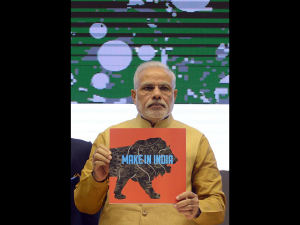
PM Narendra Modi launched the “Make in India” project to promote India’s manufacturing sector and advance the nation’s economy abroad. It seeks to establish and encourage businesses to invent, produce, and assemble goods created in India and to encourage targeted investments in manufacturing. An estimated 10 per cent change in demand from China to India might cause India’s exports to go up substantially. The recent rise in exports serves as evidence of this undertone.
In order to potentially become a global manufacturing hub in next few years, India needs to provide a trade agreements with the UK, EU, US, and other like-minded countries in the Asia-Pacific area. In order for Indian manufacturing to satisfy international standards for consistency and dependability, more mechanisation is also necessary, and capital costs must considerably decline so that Indian exports can compete on a global scale. Therefore, India must create enterprises that are focused on exports.
An intriguing development over the past five years is that India has become a desirable location for international industrial investments. Numerous companies, including those from the luxury, automobile, and mobile phone industries, have already established or are planning to do so in the country. India’s manufacturing industry has the potential to generate $1 trillion in revenue by 2025.
The operational environment is continually improving, and India is putting an emphasis on cost competitiveness in addition to quality, according to PM Modi. Additionally, India has a vast talent pool of skilled labour.
Last but not least, a number of multinational corporations are preparing to move their manufacturing operations to India due to several favourable factors for them, including the country’s sizable consumer market, political stability, ease of doing business, and role as a regional export hub as a result of trade agreements India has negotiated.
India’s foreign policy seeks to uphold world peace and security, fight imperialism, reject apartheid, promote peaceful and political resolution of international conflicts, encourage peaceful cohabitation, be neutral and uncommitted, and uphold national unity.
As a result, India’s foreign policy sought to maintain friendly relations with other countries while adhering to international law. In order to prevent internal conflicts, it is crucial to preserve the culture and keep the population united because India is a nation with a diverse range of cultures and languages.
India founded the Non-Aligned Movement and served as its leader under Jawaharlal Nehru. India has actively contributed to the movement’s growth and effectiveness as a voice for the interests and aspirations of developing nations on such crucial topics. Non-alignment is the most important feature of Indian foreign policy.
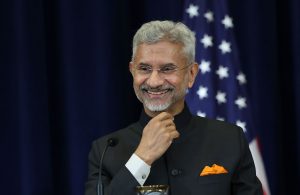
Refusing to join any military alliance established by the United States and the Soviet Union, which after World War II became a significant aspect of Cold War politics, is its fundamental component in maintaining independence in international affairs. India was granted a non-permanent membership on the United Nations Security Council (UNSC) for several times.
India is dedicated to advancing fair and inclusive solutions for global peace, security, and multilateralism through this non-permanent membership Now it is thought that India will soon exert enough influence to be granted a permanent seat when the UNSC’s laws are reformed.
Similar to this, India is an important member of the G-20 groups and is now serving as its chair thanks to its autonomous foreign policy.
India’s foreign policy cannot be a “pale replica” of the laws or decrees of another nation, according to S. Jaishankar, India’s foreign minister. India makes its own decisions, and its autonomous foreign policy cannot be threatened. The reason India’s foreign policy has been successful is because its fundamental ideas have withstood the test of time and have been successfully modified to fit the changing times and circumstances.
Education and skilled labour may work wonders for any economy and possibly end poverty. Over the past 20 years, India’s human resource has become increasingly visible, not just within the nation but also on a global scale. The greatest English-speaking workforce in the world is found in India. As China has developed into a global “manufacturing factory,” India should take China’s place as the world’s “capital of human resources,” according to PM Modi, who recently unveiled the ambitious “Skill India” Mission as a component of the government’s “war against poverty.”
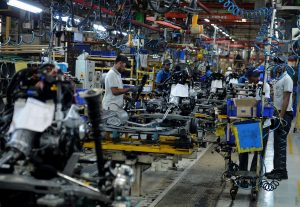
According to the World Bank’s collection of development indicators, the country’s labour force was estimated to total 47.13 crore in 2021. In addition, India placed 132 out of 191 countries and territories in the Human Development Report for 2021–22, according to the UNDP report.
India is home to some of the world’s most talented scientists and engineers. In terms of the number of PhDs in science and engineering, India is ranked third in the world. In India, the IT sector was home to around 2.8 million workers in 2021. In 2021, the India human resource (HR) technology market is expected to be worth US$ 850 million.
On November 9, 2014, India formed the Ministry of Skill Development and Entrepreneurship to oversee all national activities aimed at improving the main and secondary categories of human resources’ skill levels. These policies and programmes have been critical in closing the nation’s skills and training workforce supply and demand gaps. India is therefore considered an emerging global power due to its growing, trained, and skilled workforce and fastest-developing economy.
Science and technology have received a lot of attention in modern India, which has come to understand their importance for economic development. The last 10 years have seen India serve as a centre for technical development. This can be partly attributed to the early aptitude for math and science among Indians. It is argued that Indians’ ability to use technology is a result of their upbringing, culture, and educational system.

India is the world’s leading exporter of IT goods, home to the third-largest pharmaceutical industry, and a rapidly expanding contract research market. According to the number of peer-reviewed science and engineering articles published worldwide, India ranks third.
According to a recent UNCTAD (United Nations Conference on Trade and Development) country readiness score, India was the biggest “over-performer” in frontier technologies than its per capita GDP would imply (UNCTAD).
Frontier technologies are those that use digitalization and connectivity to their advantage. Examples include artificial intelligence, the internet of things, big data, block chain, fifth-generation mobile telephony, three-dimensional printing, robotics, drones (remotely controlled flights), gene editing, nanotechnology, and solar power.
India has also manufactured satellites, launched probes to the moon and Mars via the Indian Space Research Organization (ISRO), gained the technology to make nuclear weapons, developed nuclear power plants, and shown its potency by showcasing a variety of missiles developed by DRDO. ISRO demonstrated its technological prowess by launching 104 satellites into sun-synchronous orbits on February 15, 2017. All of these breakthroughs by Indian scientists and technology are without a doubt extraordinary and serve as a powerful sign of India’s potential as a rising global power.
In 2017, Bohler Ron in his book “What is a Great Power? A Concept and Its Meaning for Understanding International Relations” mentioned that a sovereign state is one that is acknowledged as having the power to affect events on a world-wide scale, is called a global power. Global powers typically have significant economic, military, and diplomatic influence, which can compel other nations to take their views into account before acting independently. Global powers occasionally receive official recognition in a global organisation like the UN Security Council.
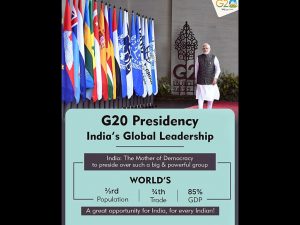
The key to India’s clout in the shifting Asian power dynamics is its advantageous position. India’s status as a big “soft power”—the capacity of a nation to persuade others to do what it wants without using force or coercion—has contributed significantly to its rise as a rising global power. India poses no threat to anyone and is a friend to many.
India is widely seen as a democratic country with a benign international impact that is relatively non-violent, tolerant, and pluralistic. India has been fostering a strong relationship with the United States which is evident that in order to counter China’s expanding influence in the Indo-Pacific, the US, Japan, and Australia are collaborating closely with India.
Several favourable factors enable India to wield global influence, including the fact that it is the world’s largest democratic republic with a GDP of approximately $3.3 trillion, which is rapidly rising, has access to a talented workforce, enjoys significant political stability under popular and skilled leadership, has one of the world’s greatest militaries, has a balanced foreign policy, and is the world’s largest contributor to United Nations peacekeeping operations.
Furthermore, as a founding member of the Non-Aligned Movement, India plays an important role in international politics; it is an active member of the Commonwealth and the World Trade Organization (WTO), chairs G20 affairs, and maintains a close relationship with the United States of America, giving India greater ability to exert influence on a global scale and labelling India as a “global power.”
India is a progressive nation with a strong soft power heritage. The nation is acutely aware of the importance of its cultural engagement and has to make a small amount of effort to present its interesting culture to all corners of the globe.
India has an upbeat vision of a liberal, nonviolent, relatively pluralistic democracy with non-threatening global leadership. Luminaries like Mahatma Gandhi and Rabindranath Tagore, as well as the arts of literature, music, dance, the software industry, Ayurveda, etc., generate a staggering array of soft power assets that highlight India’s appeal to the world’s population. Indians are known for their values of respect, harmony, and fraternity.
India is viewed as a supporter of discourse, culture, and cooperation in the advancement of world politics. “India’s wonderful legacy of religious tolerance can be a role model for the entire world,” the Dalai Lama once said.
Yoga is a means of discovering and comprehending the spiritual side of India. India’s culture and heritage are linked to yoga. Yoga, which means “to unify” in Sanskrit, denotes a way to have a healthy existence. Since 2015, June 21 has been designated as the International Day of Yoga, which is observed worldwide. Yoga is a treasured gift of India’s old culture, according to Modi, who made this claim during his speech to the UN General Assembly on September 27, 2014. In India, Baba (Swami) Ramdev is most known for being an advocate for Ayurveda and yoga.
India is an old civilization with the greatest democracy in the world, a secular culture, and a quickly expanding market, surpassing the UK and France economies. India has been working to improve its foreign policy and diplomacy in order to increase communication, tourism, culture, and soft power and build multilateral and bilateral relationships with many countries.
India is now better positioned to join the group of the world’s growing powers due to the appeal of the country’s culture, social ideals, and foreign policy, as well as the strength of its economy and military.
India offers geographical diversity, global heritage sites, and specialty tourism goods including cruises, adventures, medical tourism, eco-tourism, etc., despite being ranked 54th in the travel and tourism development index in 2021. Some of the world’s top tourist destinations can be found in India.
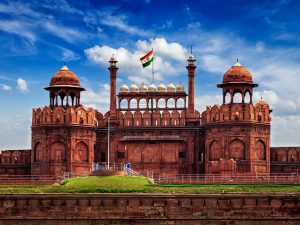
Among many other breath taking architectural marvels, monuments like the Taj Mahal, Red Fort, Golden Temple, Hawa Mahal, Ajanta Caves, the Hampi temple complex, and Charminar have mesmerized. For travellers from the United States, Europe, and the Asia-Pacific region, India offers an important tourist destination. The stunning beaches of Goa and Kerala, skiing in Auli, Uttarakhand, and a variety of outdoor sports like rock climbing, mountain biking, paragliding, ice skating, trekking, rafting, and heli-skiing in Himachal Pradesh attract both national and international tourists.
Rajasthan’s natural beauty, bird sanctuaries, historical forts, palaces, art, and culture are all famous to attract foreign tourists. Most importantly, Kerala is renowned in particular for its ecological projects and stunning backwaters, earning it a spot on National Geographic Traveller’s list of the “ten paradises of the globe.”
Hinduism, Buddhism, Sikhism, and Jainism are just a few of the main world faiths that have their roots in India, which is also renowned for its diverse and vibrant cultures. The majority of travellers think about going to India because they want to experience the many different cultures and traditions, many of which are rare.
India received 10.6 million foreign tourists in 2018-19 compared to 10.4 million in 2017-18.
The Covid-19 pandemic caused a huge decrease in the population. While 2.74 million foreign visitors came to India in 2020, only 1.52 million did so in 2021.
The Swadesh Darshan Scheme attempts to promote, develop, and capitalise on India’s tourism potential by encouraging theme-based travel.
The ministry of tourism under its Swadesh Darshan Scheme (SDS) has sanctioned 76 projects for Rs.5399.15 crores for development of tourism infrastructure in the country. These sanctioned projects include Tribal and Rural tourism projects.
As of 2021, the travel and tourism industry in India contributes almost 5.8% of the nation’s total GDP. This indicates that the industry is becoming increasingly important to the nation.
India has been grappling with both internal and external challenges, including a portion of its sizable population still living in poverty, rising young unemployment, health care, population integration, widening wealth discrepancies between the rich and the poor, and geopolitical worries. According to Tara Gracer, Zahra Lalani, and Chi Nguyen, inadequate water and sanitation, low adult literacy rates, and other issues stand in the way of India becoming an emerging global power. These issues should be resolved for the nation by the Modi administration.
On the basis of GDP at Purchasing Power Parity, India will surpass the United States to replace China as the second-largest economy in the world in 2050, according to a report titled “The World in 2050,” published by the London-based Price Waterhouse Cooper (PWC) in 2017.
In addition, India’s poverty rate has been falling over time. India has achieved tremendous progress in lowering absolute poverty since the 2000s, according to a World Bank study on the country’s poverty that was published in April 2020.
With its rapidly expanding economy, growing military power, large skilled and trained labour force, rich cultural heritage, favourable demographic position, pursuit of an independent foreign policy, capacity to have a greater impact on global issues, developing agricultural, industrial, and service sectors, advancement in technology, potentially growing manufacturing hub, and rapidly developing tourist destination, among other factors, it is able to be an emerging power on which other countries can look for guidance.
India has been working hard to make rapid progress in this area, but it must significantly overcome some of the challenges it has been encountering if it is to be regarded as a truly global superpower. Hillary Clinton stated in 2009 that she views India as a global force in light of this.
Dr Prem Lal Joshi is a former NRI accounting professor and is currently the editor-in-chief of the International Journal of Auditing and Accounting Studies (IJAAS). The author is thankful to Prof. Govindan Marathandan for suggestions on this piece. Dr Joshi can be reached at [email protected].
The views expressed in this piece are the personal views of the author